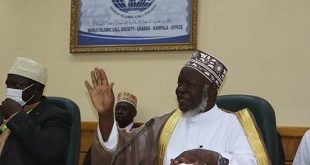While levels of condom use with casual partners and the proportion of people reporting multiple sexual partners remained largely unchanged, the proportion of adolescents ages 15 to 19 who reported never having sex rose from 30 percent in 1999 to 55 percent in 2016.
As an apparent consequence of these increases, particularly in ART use and voluntary male circumcision, the annual number of new HIV infections in the cohort fell from 1.17 per 100 person-years in 2009 to 0.66 per 100 person-years in 2016, a 42 percent decrease. Person-years are the sum of the number of years that each cohort member participated in the study. The researchers calculated the annual number of new HIV infections using data from nearly 18,000 of the almost 34,000 total participants.
In addition, the proportion of cohort members living with HIV whose treatment suppressed the virus increased from 42 percent in 2009 to 75 percent in 2016.
“These findings are extremely encouraging and suggest that with sustained commitment to increase the number of people who use combination HIV prevention, it may be possible to achieve epidemic control and eventual elimination of HIV,” said David Serwadda, M.B.Ch.B., M.Med., M.P.H., co-founder of the Rakai Health Science Program and Professor at Makerere University School of Public Health in Kampala, Uganda.
“We expect that this multifaceted approach to HIV prevention will work as well in other populations as it has in rural Uganda,” said Dr. Grabowski. “Our results make a strong case for further expanding ART and male circumcision for HIV prevention in Rakai District and beyond. Additional proven HIV prevention interventions, such as PrEP, should be added to the mix to reduce HIV infections in women and other high-risk groups.”
The Rakai Health Sciences Program is an independent research organization whose collaborators include the Uganda Virus Research Institute of the Ministry of Health in Kampala; the NIAID Division of Intramural Research-supported International Center for Excellence in Research in Rakai; the U.S. Centers for Disease Control and Prevention partnership with Uganda (CDC-Uganda); Makerere University and Johns Hopkins University.
The RCCS and the new analysis were funded by NIAID, the Eunice Kennedy Shriver National Institute of Child Health and Human Development (NICHD) and the National Institute of Mental Health (NIMH), all part of NIH; as well as by the World Bank, the Doris Duke Charitable Foundation, the Bill & Melinda Gates Foundation, the Johns Hopkins University Center for AIDS Research and PEPFAR.
NIAID conducts and supports research—at NIH, throughout the United States, and worldwide—to study the causes of infectious and immune-mediated diseases, and to develop better means of preventing, diagnosing and treating these illnesses.
 The Independent Uganda: You get the Truth we Pay the Price
The Independent Uganda: You get the Truth we Pay the Price


